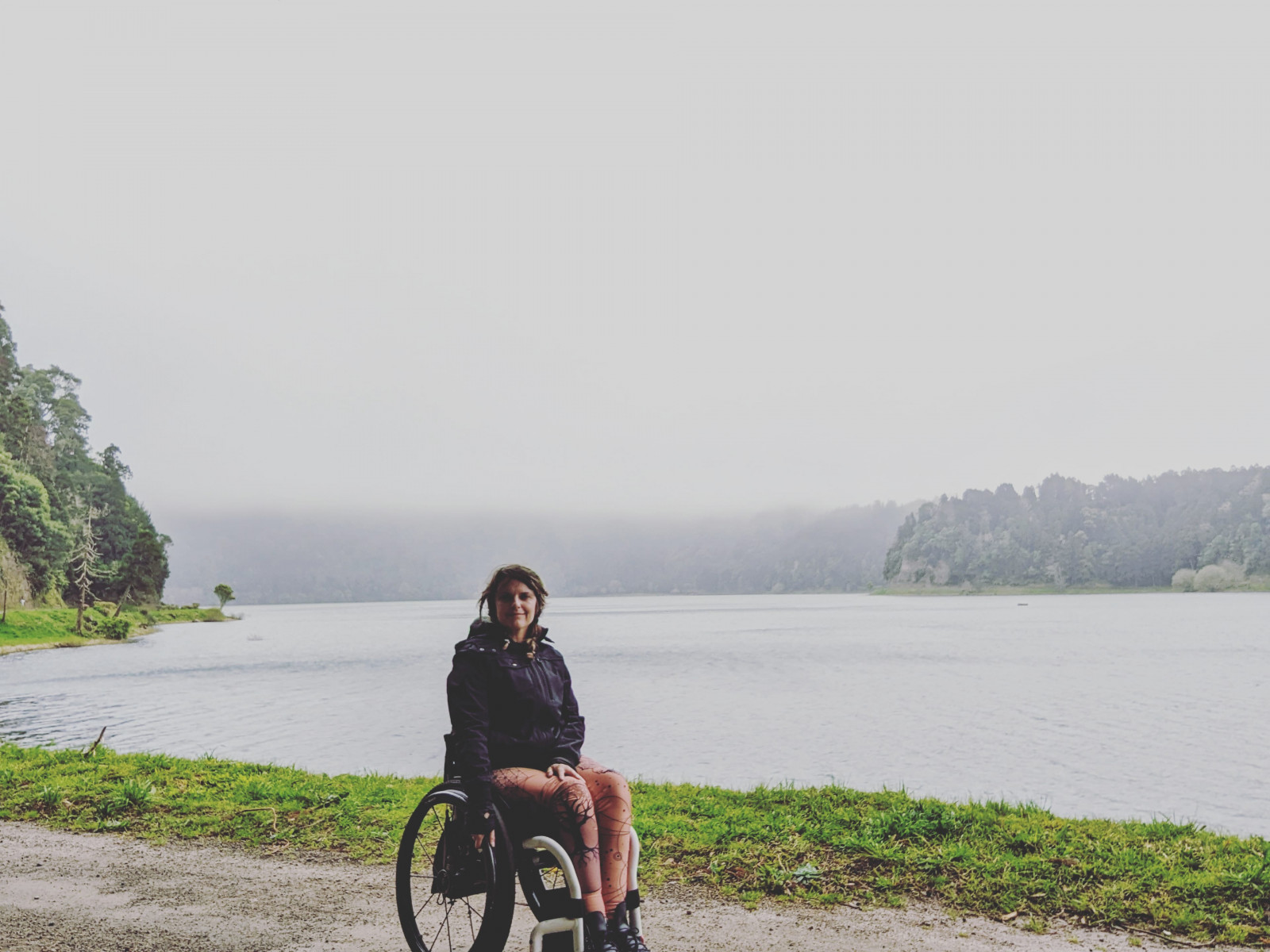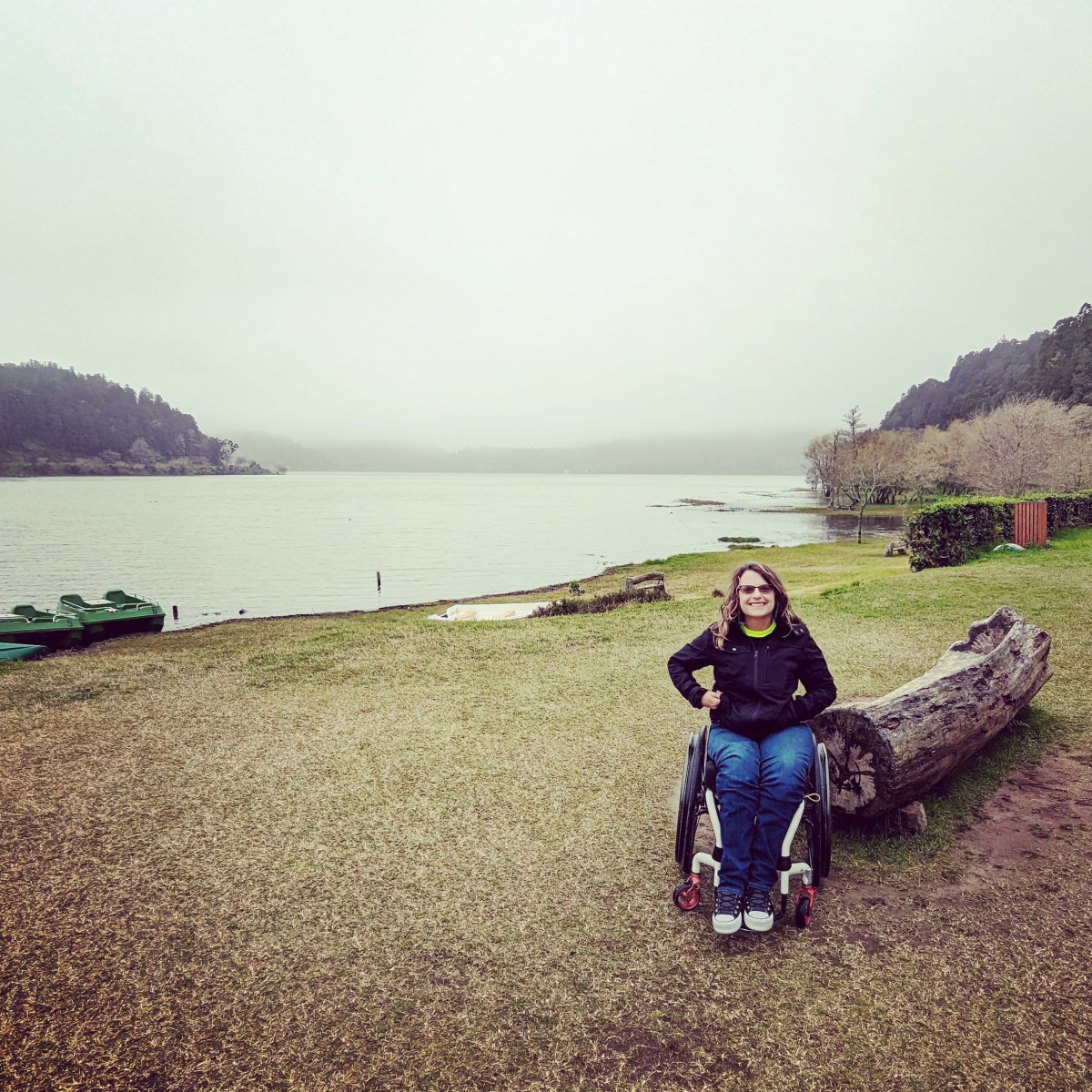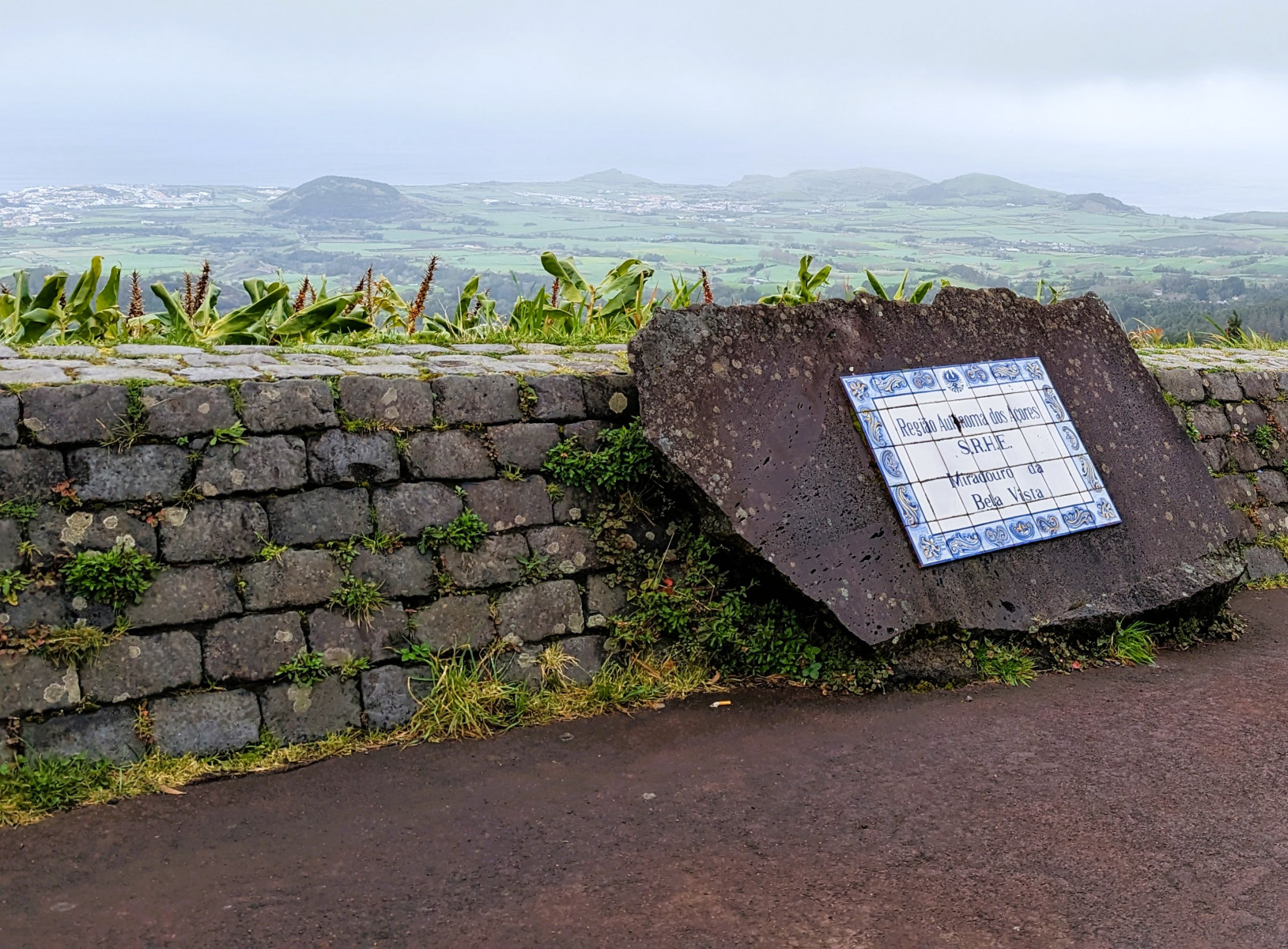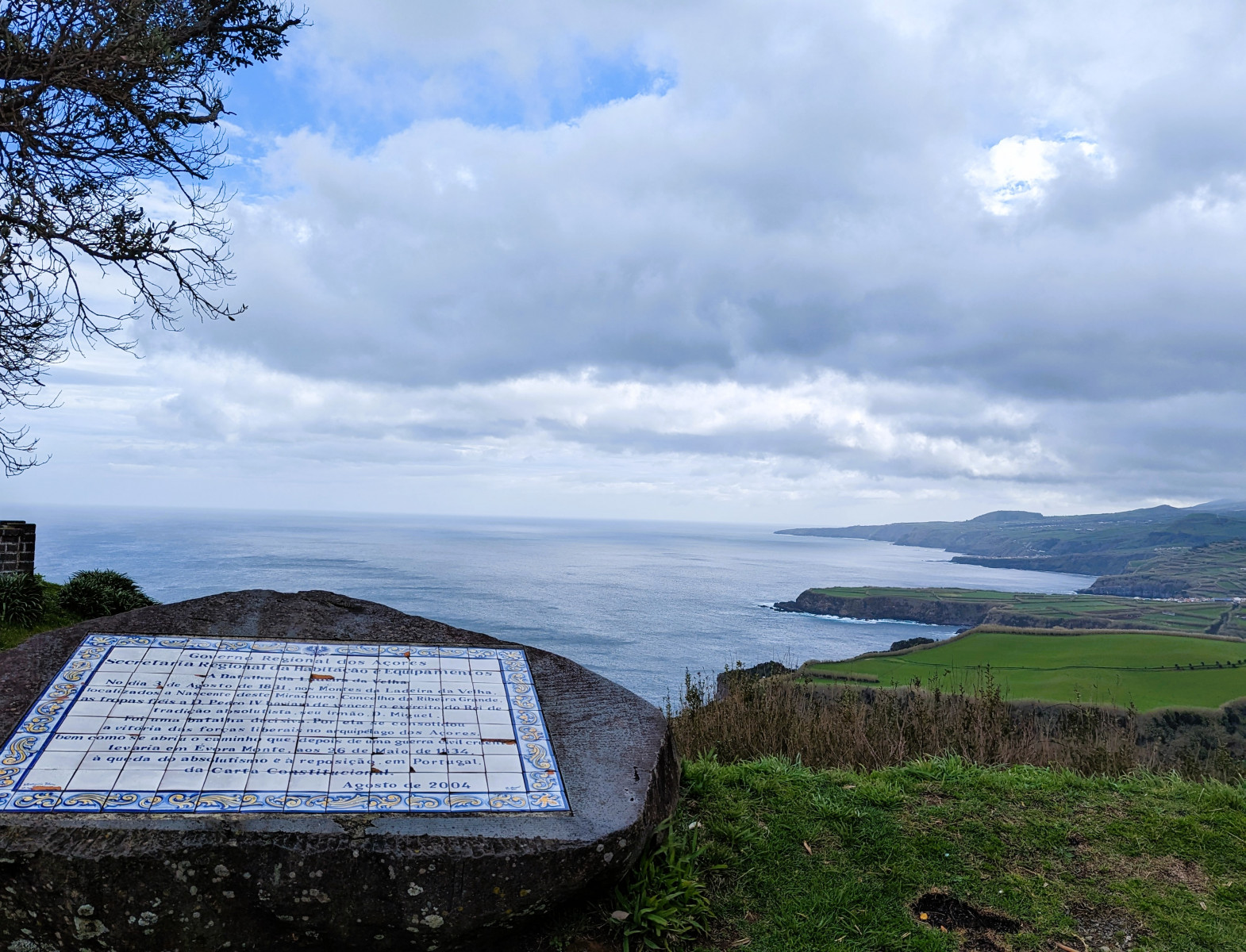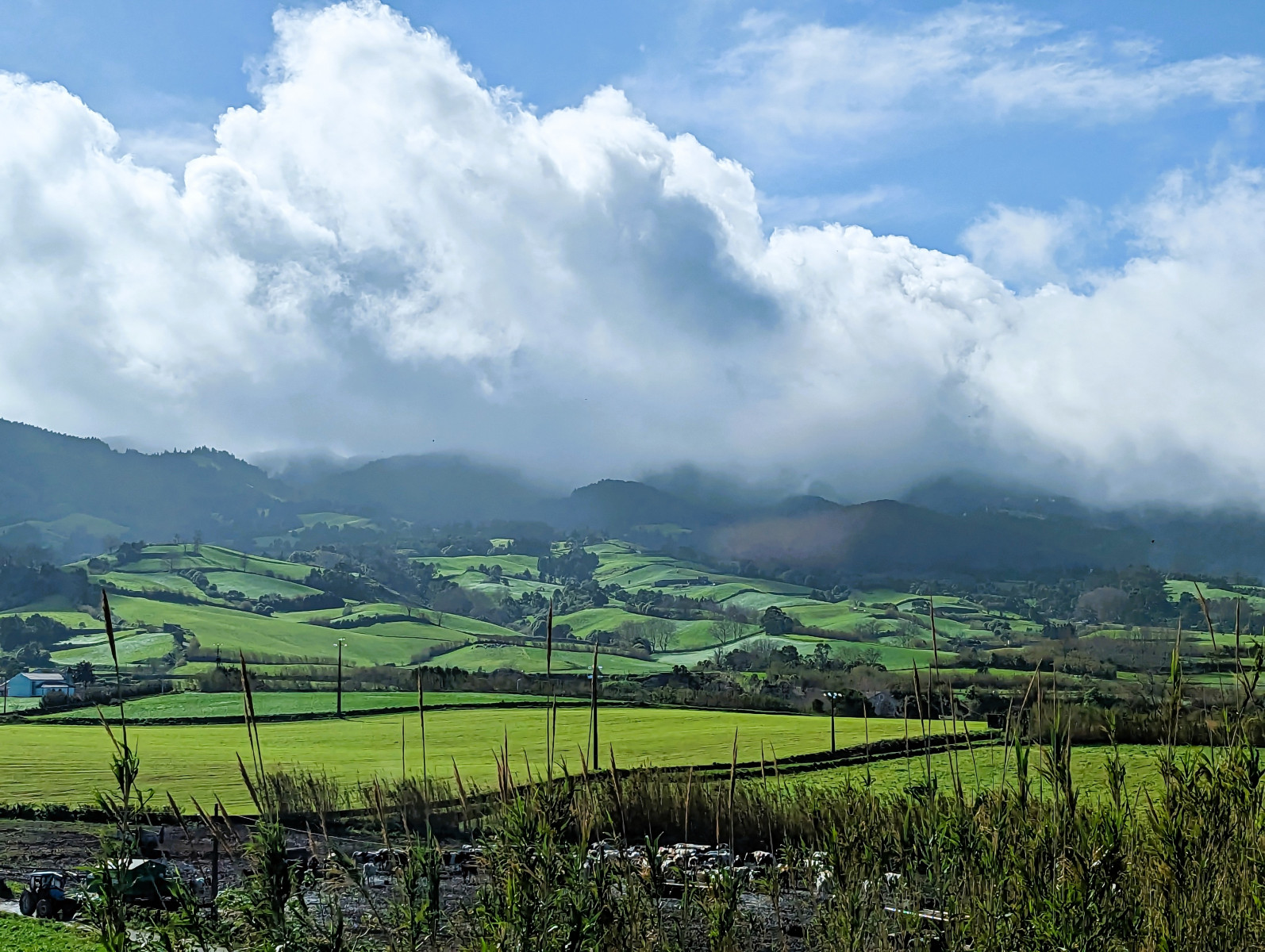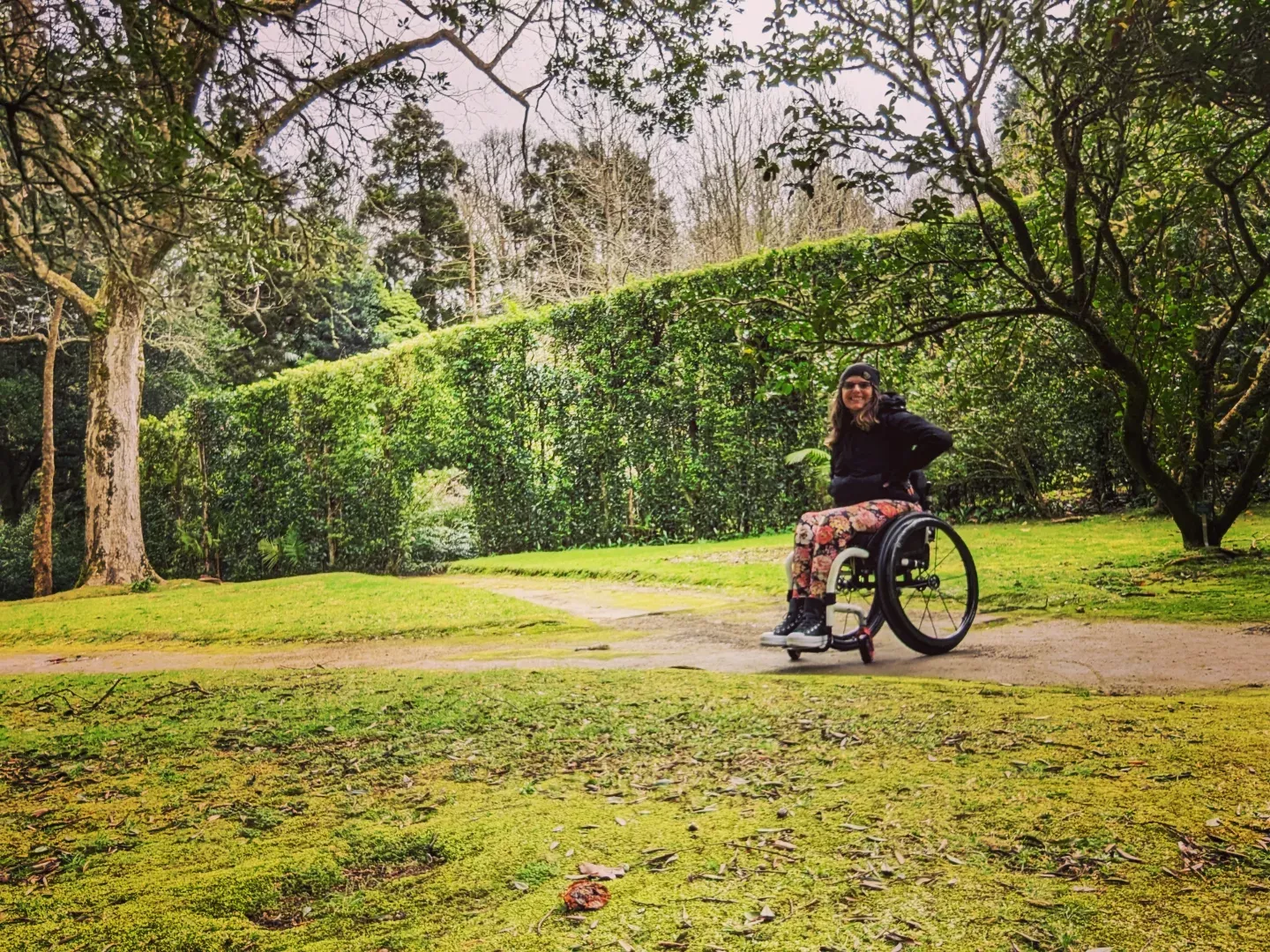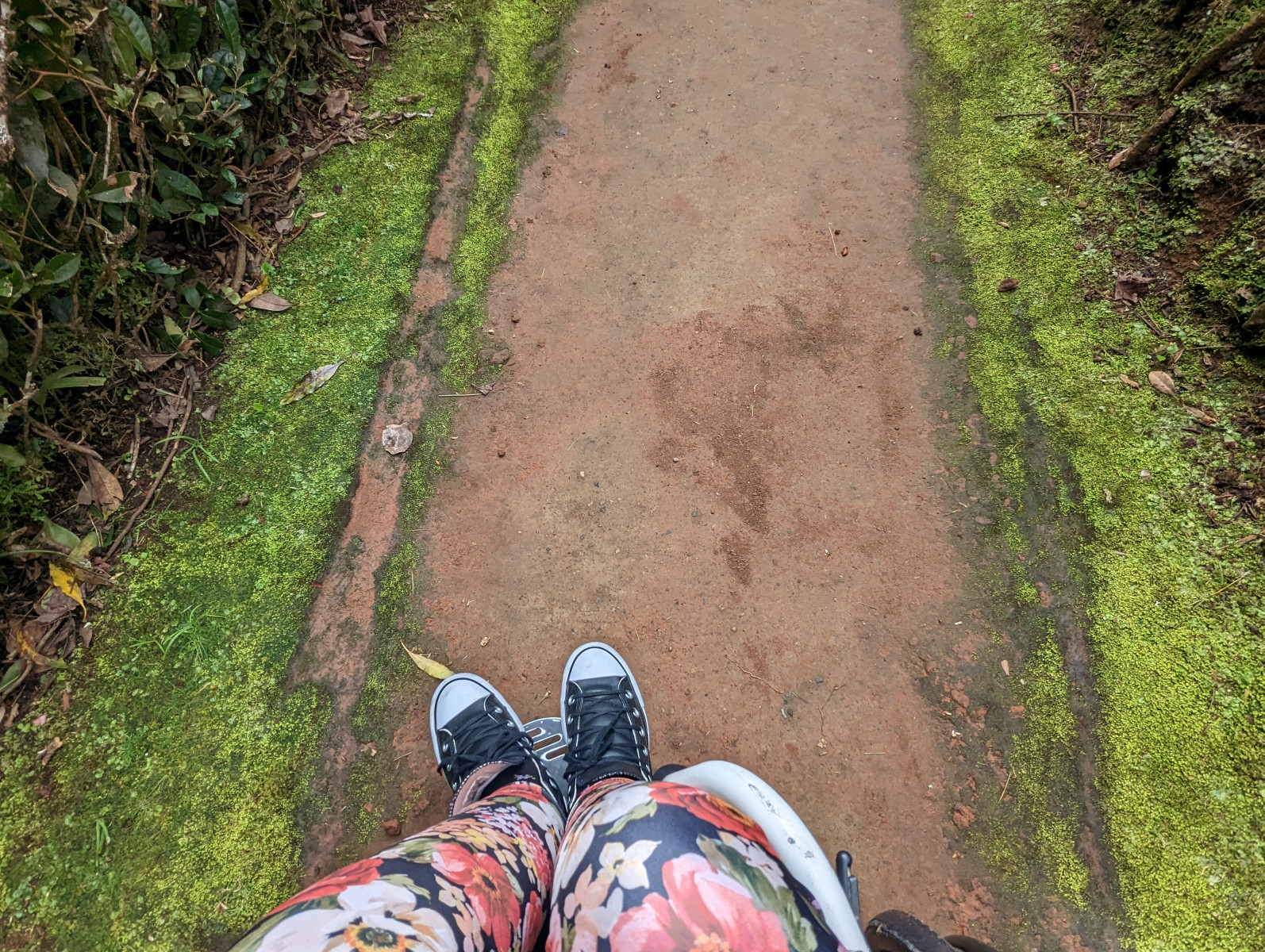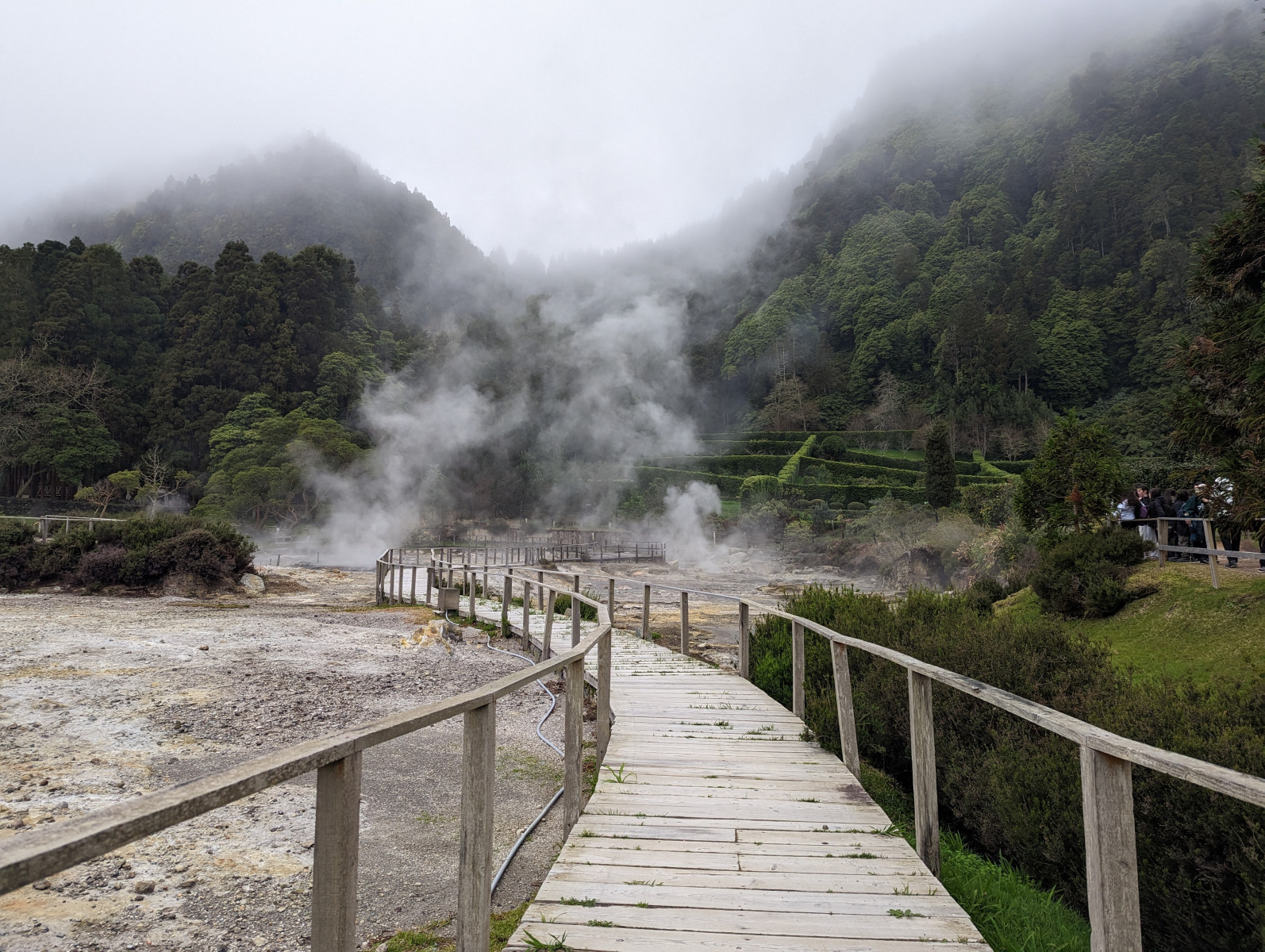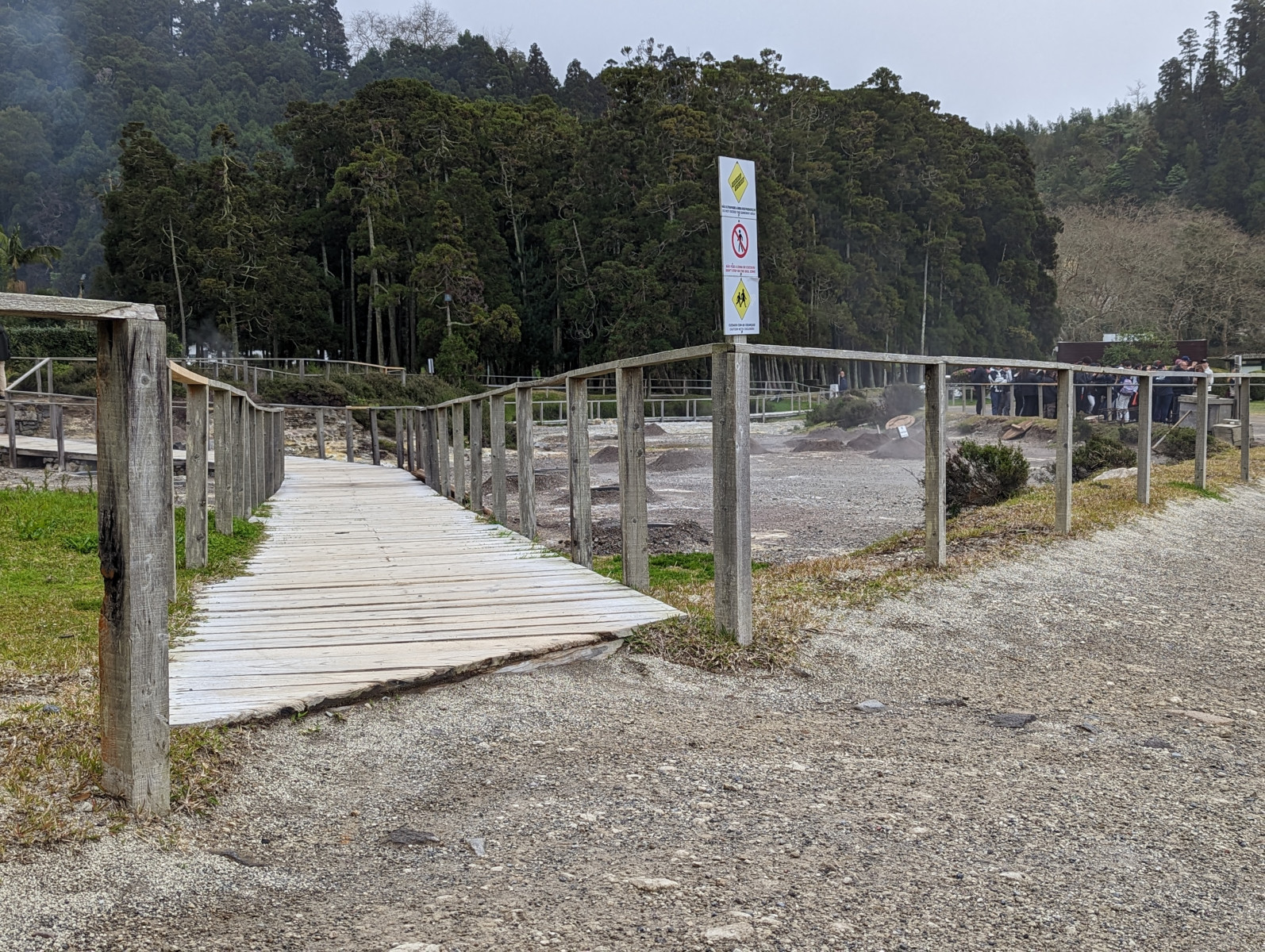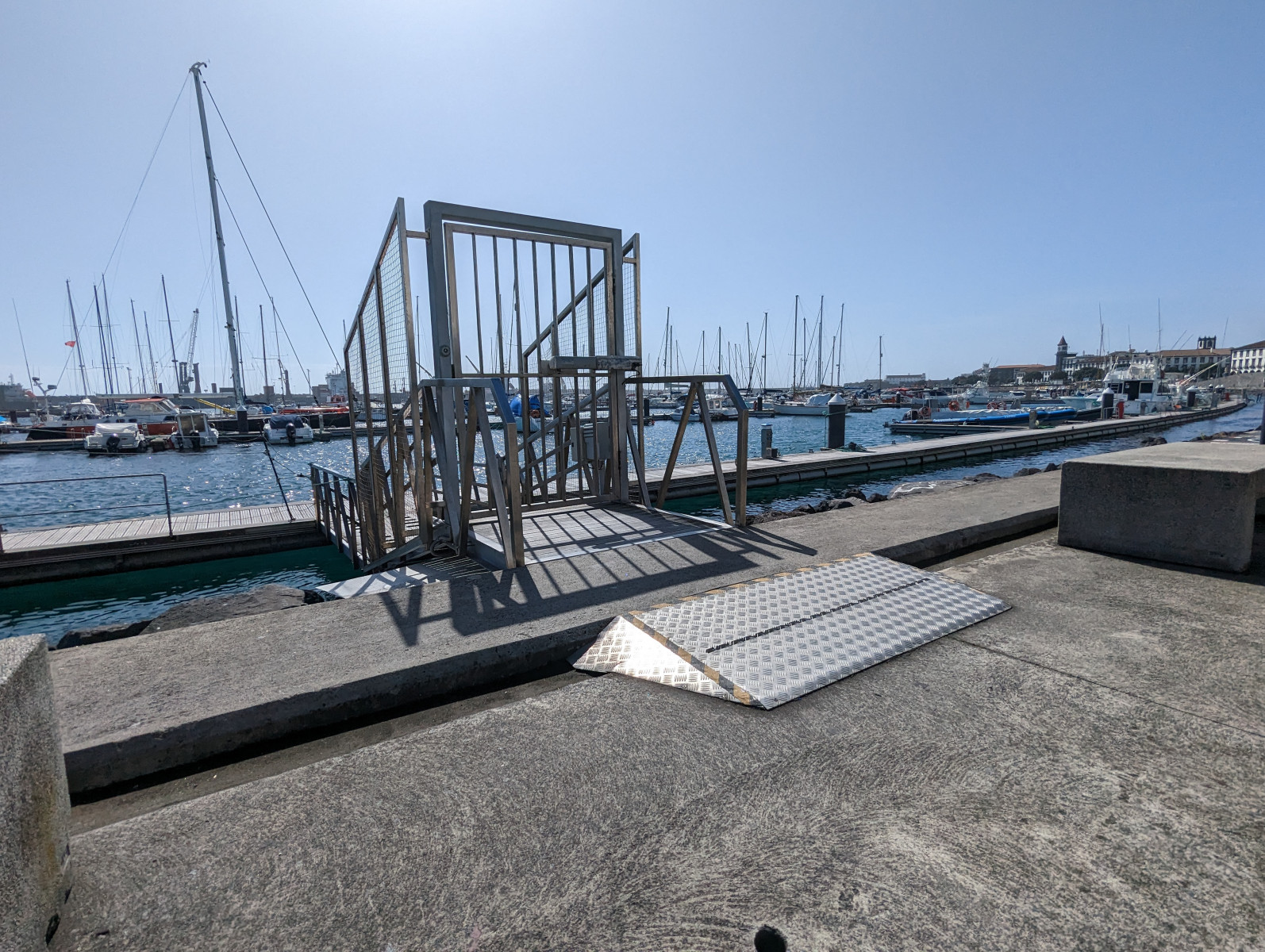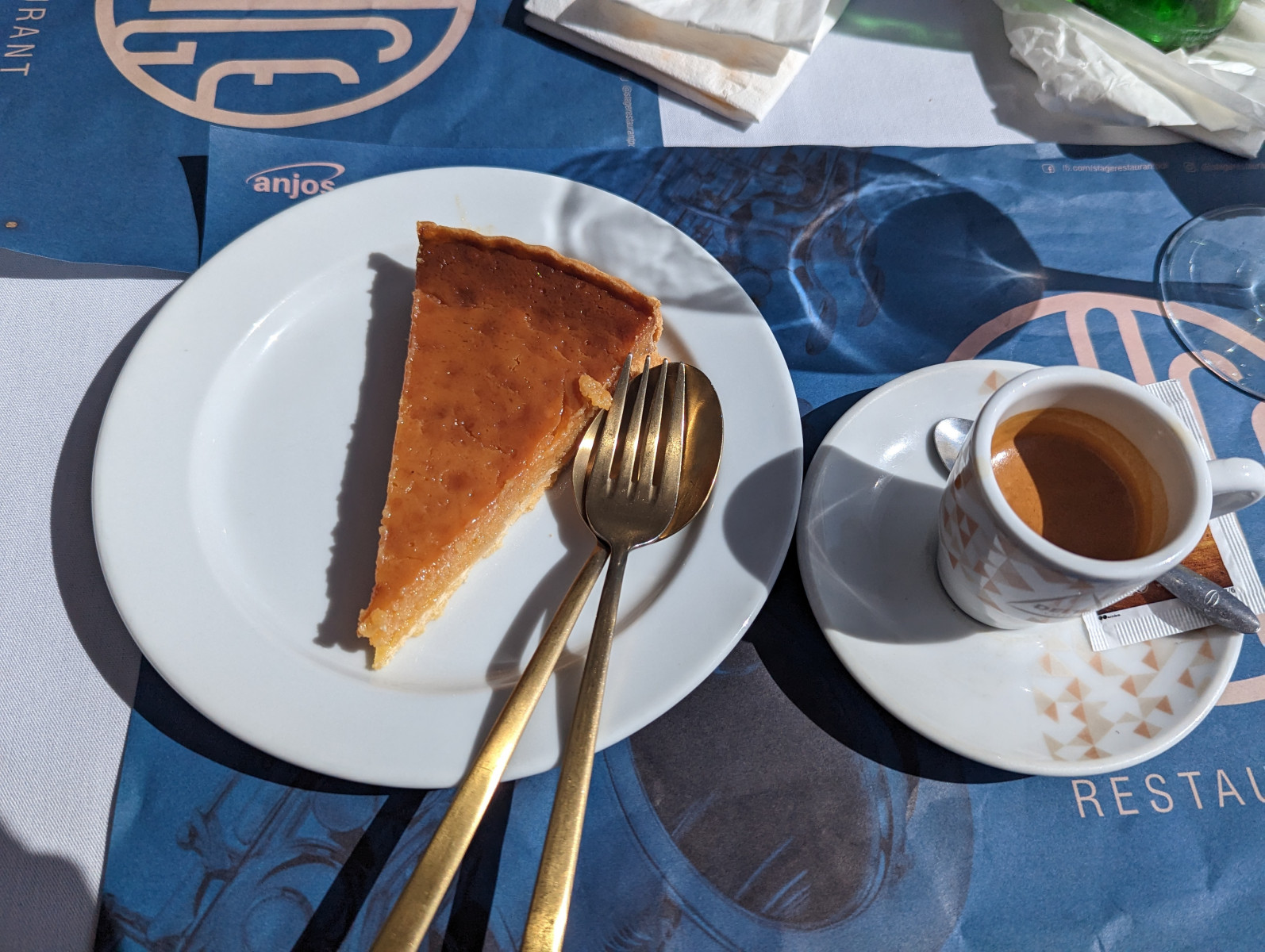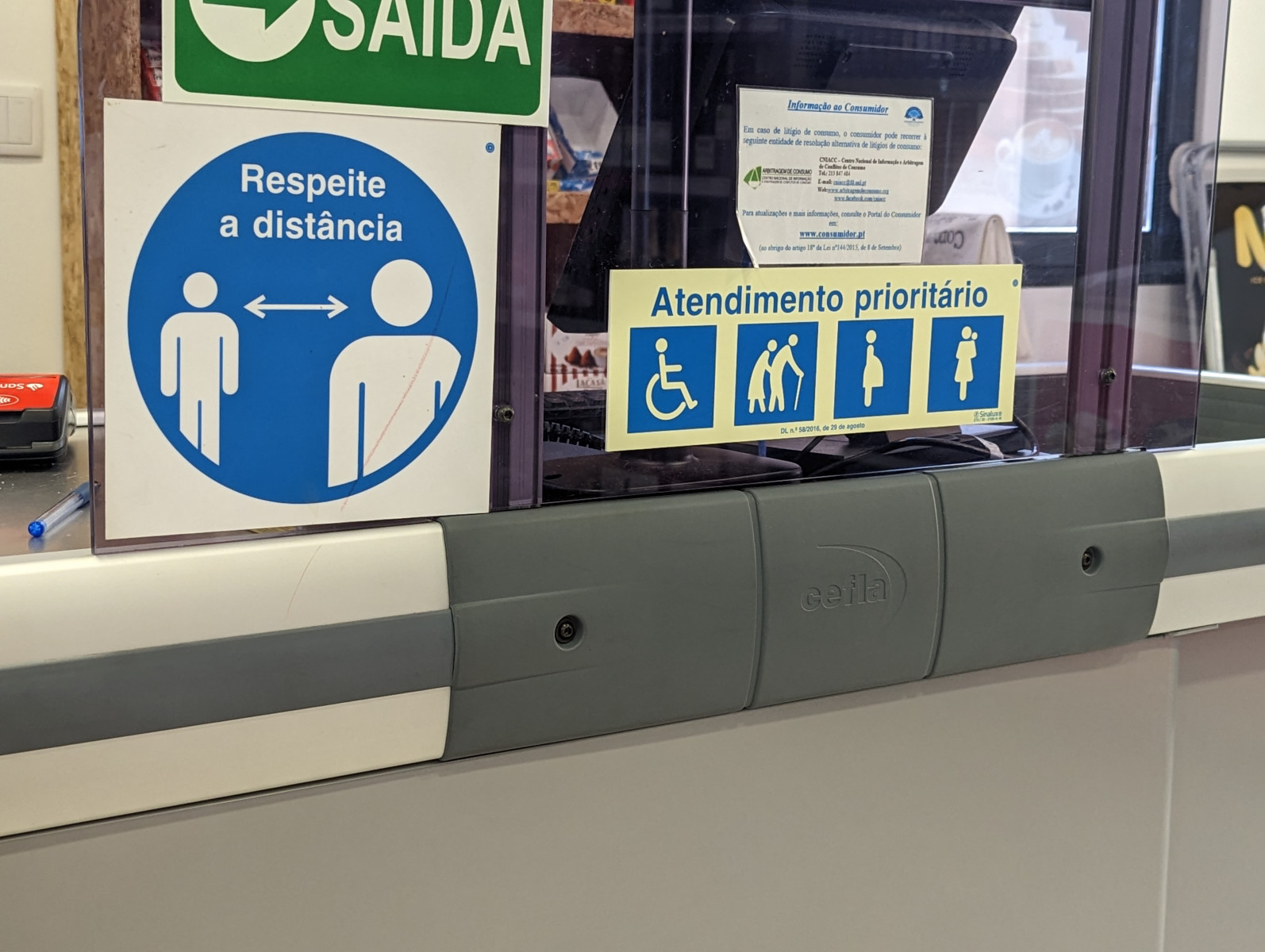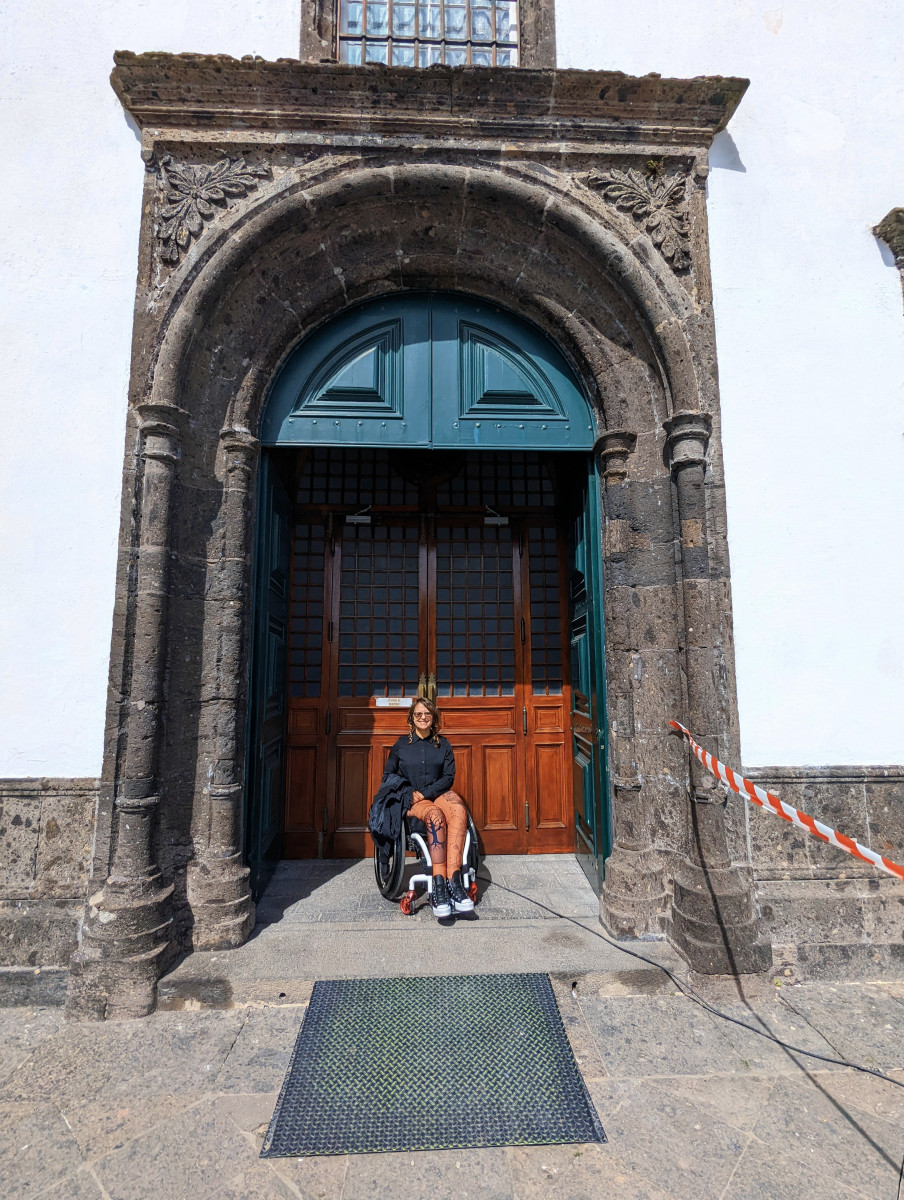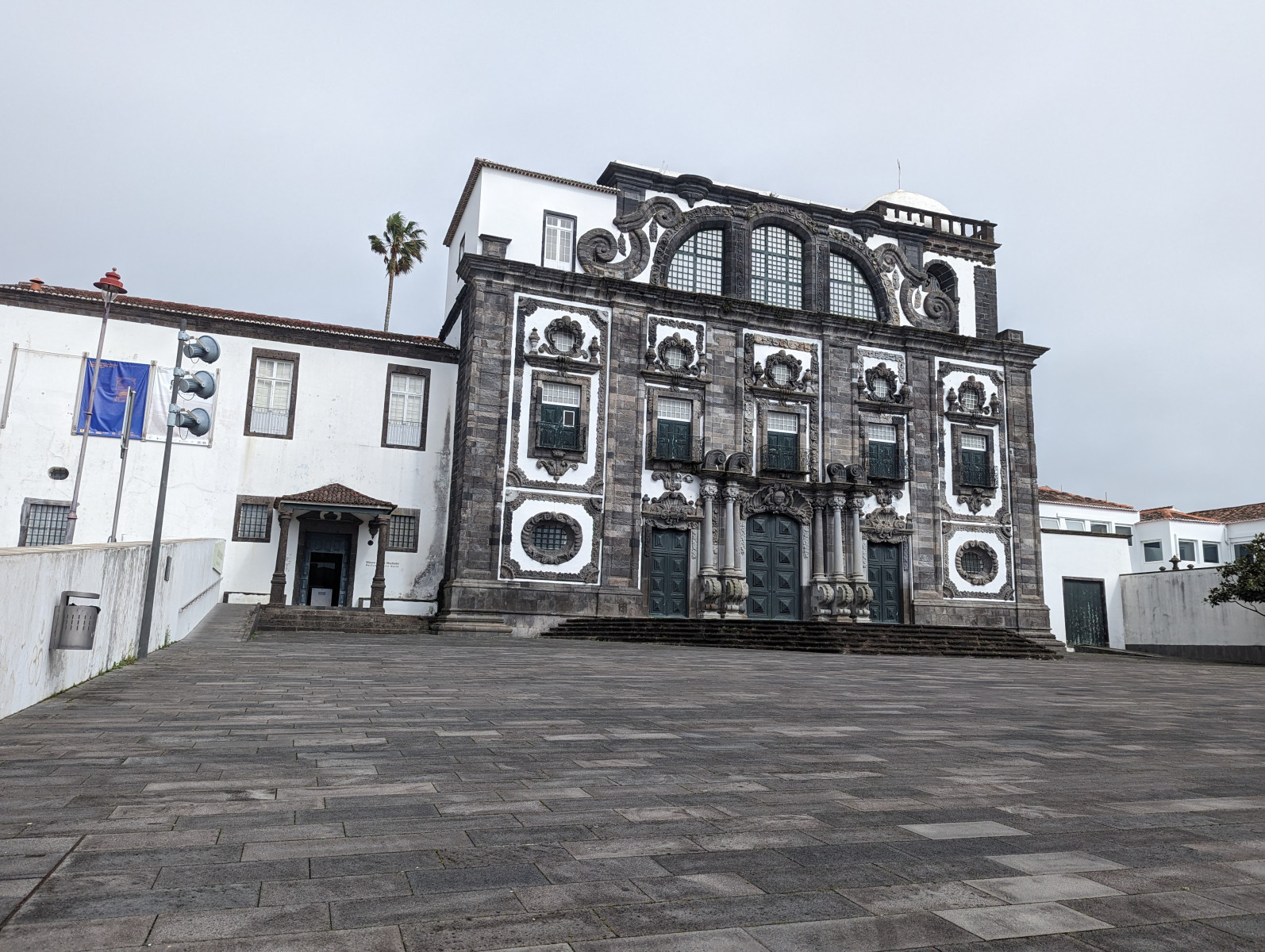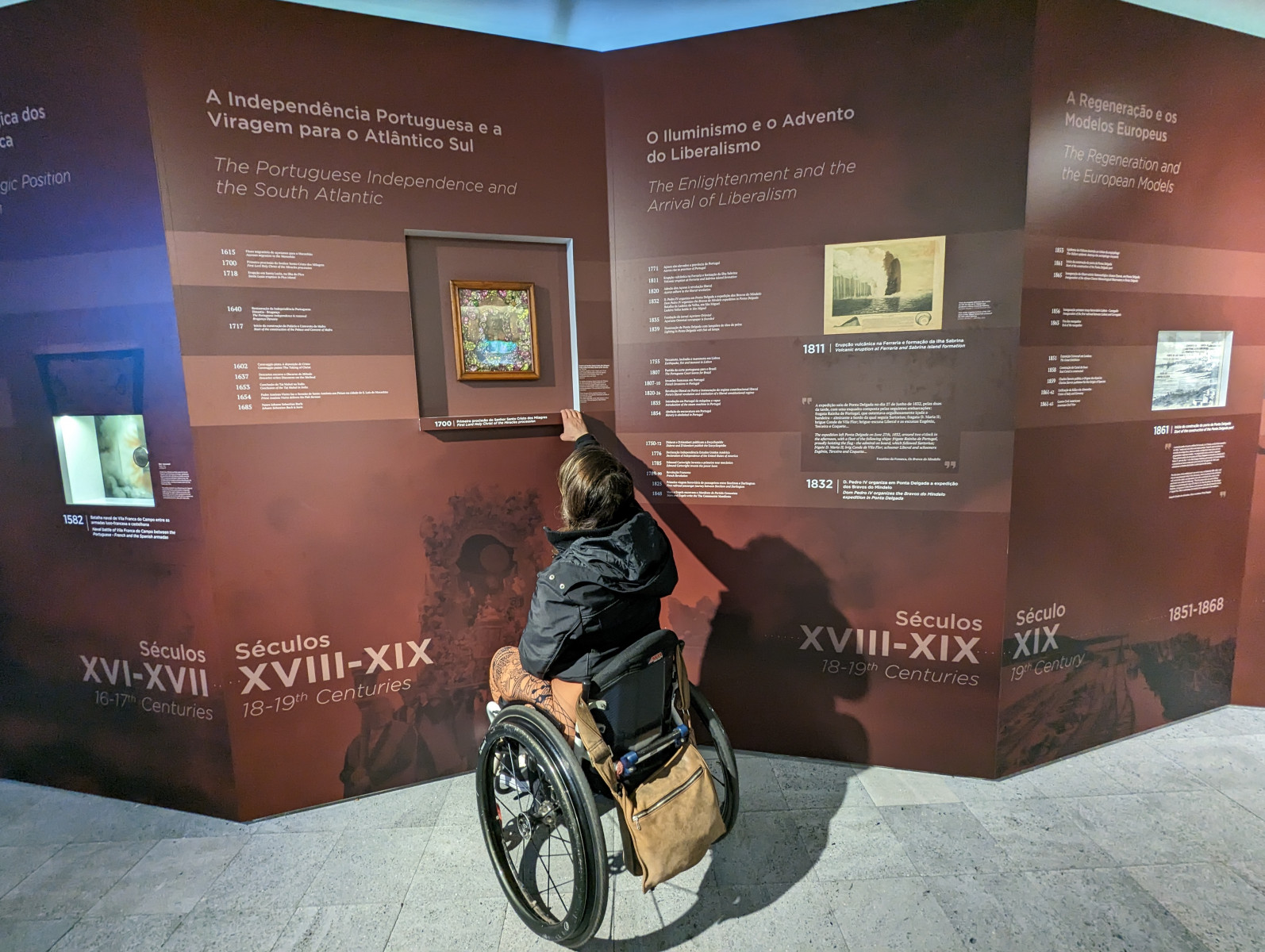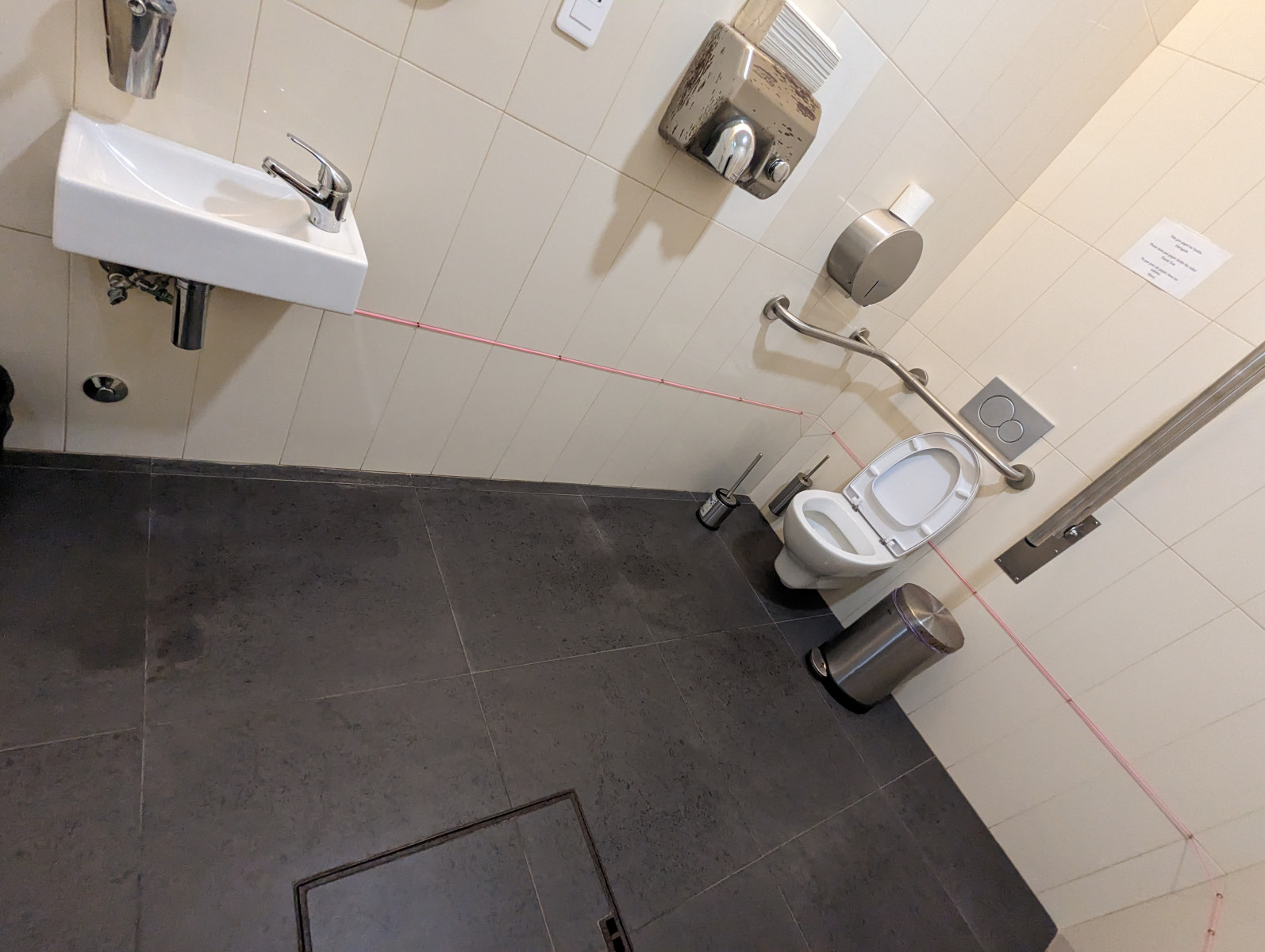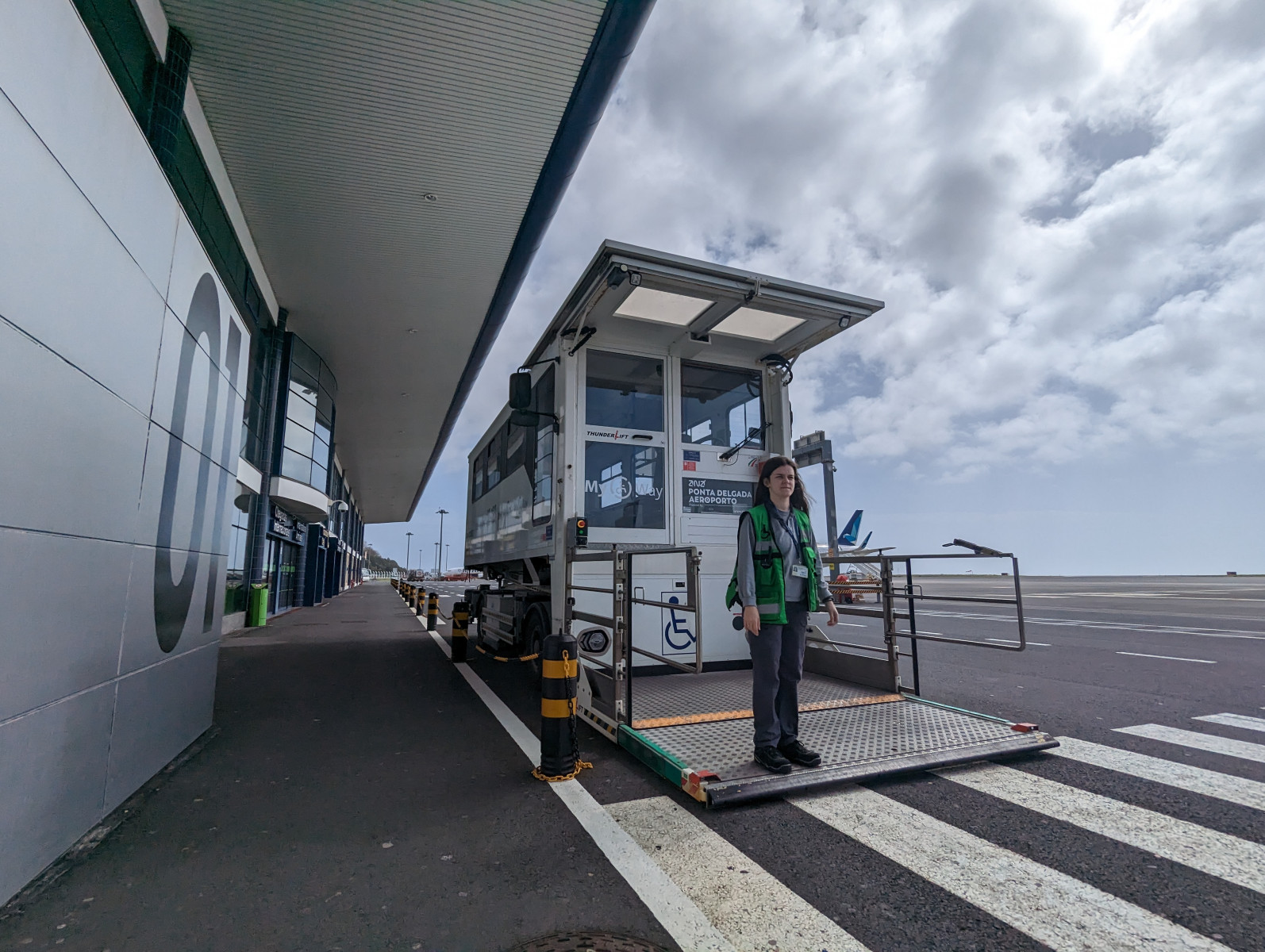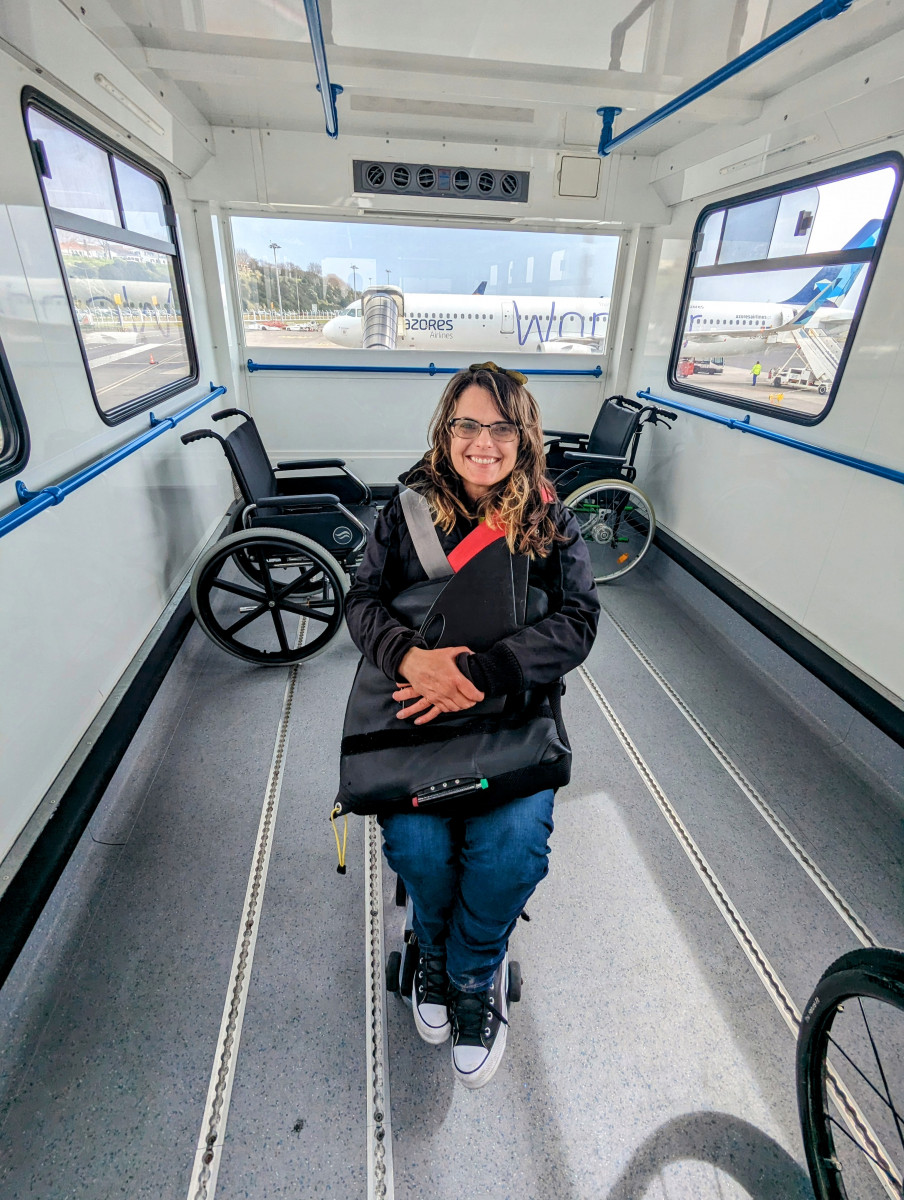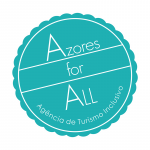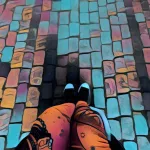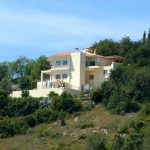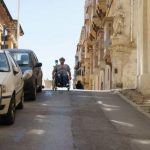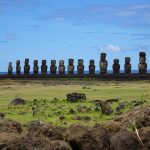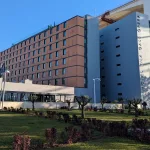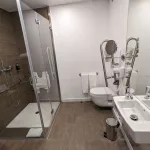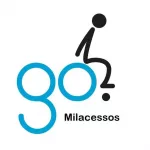I always wanted to go to the Azores, so when I was invited to Portugal by Tourism for All, I seized the opportunity even though I would only have forty-eight hours on the island. The largest and most populated of the nine Azores islands is São Miguel, my selected destination. I figured I would have the best chance of getting around in my wheelchair and accessing a few attractions. The Azores are known for having more cows than people, and with the exceptional environment, it’s no wonder why dairy and beef are known worldwide. From the shores of São Miguel is Islet Vila Franca do Campo, a small, uniquely shaped island.
One of the many reasons people travel to the Azores is for the natural environment. Even on the most populated island of São Miguel, the green far outweighs the human footprint. Just driving around will immerse visitors in beautiful views, and many official overlooks have wheelchair accessible features, like handicap parking and barrier-free pathways, to get out for a closer look. Many picnic areas are along the road in scenic areas, and although no official accessible table was located, some may be able to access and enjoy an area.
Visiting Lagoa Sete Cidades and Terra Nostra Park was high on my list as well as exploring at least one culturally significant site. Upon arrival, I decided to spend the remainder of the day at the park and set off on an excursion touring around São Miguel the following day.
Attractions
In addition to stunning ocean views, on São Miguel, the three largest bodies of water are Lagoa Sete Cidades, Lagoa das Furnas, and Lagoa do Fogo. In early March the Azores was still a bit damp and rainy mixed with sunshine. Misty clouds gathered at the peaks of the island hindering the viewpoints looking down upon the lakes, nonetheless, the ambiance was mystical.
Lagoa do Fogo can only be accessed by a vehicle at the top at the viewpoints of Miradouro da Bela Vista and Miradouro do Pico da Barrosa, however, Lagoa Sete Cidades and Lagoa das Furnas both have roads down to the base. Viewpoints around the Lagoa Sete Cidades area include Miradouro da Ponta do Escalvado, Miradouro do Pico do Carvão, and Miradouro da Vista do Rei.
Visit the Pico do Ferro and Santa Iria overlooks on the North Coast in Furnas Valley. In the center of Furnas Valley is Lagoa das Furnas (Furnas Lake). Explore the volcanic origin of São Miguel at the Caldeiras da Lagoa das Furnas and see where the famous island dish “cozido das Furnas” is slow-cooked for over twelve hours in the volcano. The Caldeiras das Furnas nature preserve is right off Rua do Estaleiro in the middle of town where geothermal pools and geysers are easily seen from the car. Nonetheless, a barrier-free viewing area allows visitors to get out of the car and closer to the attraction.
If you love parks and gardens, one must-do activity is visiting the Terra Nostra Park in the heart of Furnas Valley to be immersed in the Azores’ plant life. The hotel informed me that a staff member could push my wheelchair around the park, but I decided to do it myself. Getting to the park gate from the hotel were some inclines, and though some level areas existed, I couldn’t entirely avoid pushing uphill. If staying at the hotel, there is no entry fee. Overall, I was impressed with how many barrier-free pathways I could access in my wheelchair at Terra Nostra Park. Hours wandering around the many garden landscapes went by fast. I never wanted to leave the park.
Ponta Delgada
Ponta Delgada is a port city on the southern coast of São Miguel Island with a harbor large enough to accommodate two large cruise ships. Portas da Cidade is an 18th-century gate with three arches made from Azorean stone and style. It’s the gateway to Ponta Delgada. Avenida Infante Dom Henrique is a long waterfront promenade.
Holy Christ of Miracles Chapel (Santuário do Senhor Santo Cristo dos Milagres) in Ponte Delgada is a popular tourist and pilgrimage destination. Barrier-free pathways lead to the chapel and a ramp provides wheelchair access inside.
Museu Carlos Machado is a lovely museum in Ponta Delgada featuring various buildings with specific exhibits. The Natural History Circuit with exhibits of zoology, botany, mineralogy, and more. Inside the museum, smooth wooden floors and an elevator allow guests with wheelchairs to access the eight exhibit rooms. On the ground floor is a wheelchair accessible toilet. Though the museum has good wheelchair access, barrier-free access to the museum is not so good. Across the street from the Natural History Circuit is the Museu Carlos Machado exhibit Núcleo de Santo André in the old Convent of Santo André, a beautiful historic Azorean architecture example made of volcanic stone.
City of Ribeira Grande
City of Ribeira Grande is located in the middle of São Miguel, Azores. One of the top attractions is a visit to the Gorreana tea plantation and museum, which was established in 1883 and specializes in black and green tea. In Old Town Ribeira Grande, see the Ribeira Grande Bridge, Ribeira Grande City Hall, Church of Nossa Senhora da Estrela, and the Arquipélago Museum.
Caldeira Velha Environmental Interpretation Center, a.k.a. the Natural Monument of Caldeira Velha, is located in the central part of the island and is known for its thermal springs, but no adapted modifications have been made. Nonetheless, the area is beautiful and may be worth visiting. It’s possible to stroll along a path that was once a one-way dirt road along a creek to the hot springs.
Azores Airport
In Portugal, including the Azores, airports have developed a system to assist passengers called “My Way.” With SATA Azores Airlines, a specific desk is labeled as “priority” or “special services” which is where I went check-in to get the proper tags for my wheelchair and be escorted to the gate. Also, a large blue and white wheelchair sticker was placed on my checked luggage to indicate special priority. It’s important to use the “My Way” service especially when an aisle chair is needed.
Even if you don’t need it, confirm at the desk that you need to be escorted through the airport. After spending some time in the waiting room, someone came and offered to push me but I refused as I didn’t need it. Similar to other airports when being escorted, I was ushered to the front of the line without waiting and got to my gate quickly. Along the way are a number of wheelchair accessible toilets and near the gates are “My Way” seating areas.
Since the Azores airport is on the smaller side, an outdoor staircase on the tarmac is used to board passengers instead of jetways. Passengers unable to climb stairs have access to the airport’s spacious, portable elevator lift. This elevator lift has tie-downs for the wheelchair and regular seats too in case someone wants to instead transfer over. It’s a very short ride off the tarmac on the elevator lift. [/vc_column_text]
Tour the Azores with Azores for All.

